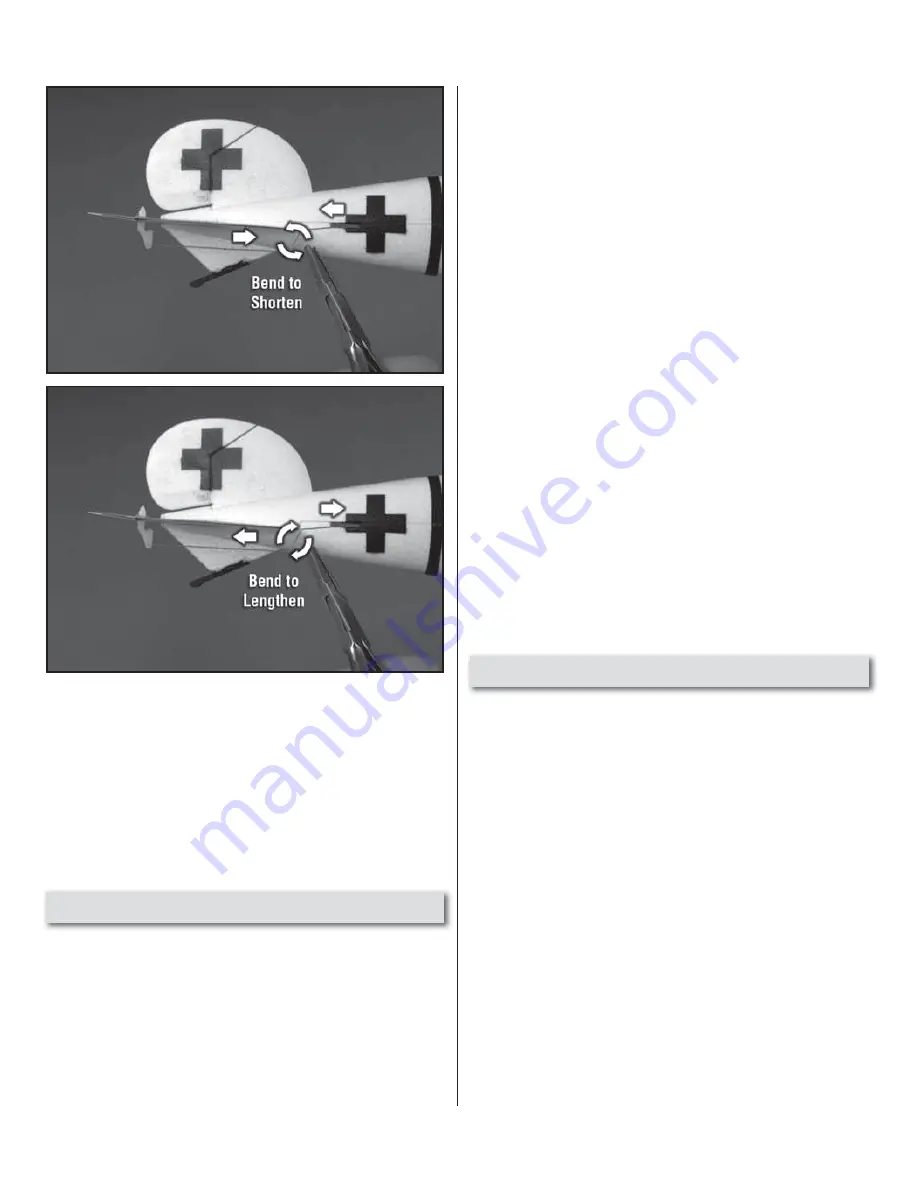
7
❏
2. If additional trim is required or you will not have at
least three clicks of additional trim in one direction, the
bends in the pushrods can be adjusted to “mechanically”
change the trim of the control surfaces. Using a set of
needle-nose or fl at pliers, increase both bend angles
equally to lengthen the pushrod or decrease both bend
angles to shorten the pushrod.
CHOOSE A GOOD FLYING SITE
The Micro Albatros can fl y indoors or outdoors. Space,
obstructions, and wind speed are primary considerations
when choosing a fl ying site for your micro fl yer. At least
until you get used to fl ying this model, choose a site that
will offer the lowest wind speed, the greatest space, and
the lowest number of obstructions. Don’t fl y around groups
of people, especially children.
FLYING INDOORS
Although the Micro Albatros is easy to fly in any
gymnasium, you should choose an indoor location that
is free from obstacles. Indoor tracks or fi eld houses may
have retractable basketball nets that can be moved out of
the way. Plan your fl ight path and fl y a simple “racetrack”
pattern until you get used to fl ying indoors with this or any
other indoor micro fl yer. Consider the placement of any
gym equipment, nets, vertical beams, or roofi ng beams.
Also consider that most indoor gyms have ventilation
systems. Do not fl y near ventilation inlets or exhaust
ducts. Always obtain the permission of the building owner
or manager before fl ying indoors and respect any safety
rules they have established.
FLYING OUTDOORS
Early mornings or late evenings are great times to fl y
your Micro Albatros outside when the wind is very calm.
Wind speeds that gust to no more than 5mph [8km/h] are
best. Choose a spot that is suffi ciently far from trees, tall
vegetation, power lines, phone lines, or other structures.
Open grass fi elds are best, but if your back yard is free
from trees or other obstructions you can comfortably fl y
from your patio.
FLYING the MICRO ALBATROS
Your transmitter controls the altitude, direction and speed
of the airplane. Pulling back on the right stick will control
the pitch attitude of the model by moving the elevator up.
This causes the tail to drop and the nose to point up. When
there is enough airspeed, this will make the model gain
altitude or climb. Pushing the right stick to the right or
left will cause the tail to push out laterally and will cause
the wings to roll in the direction of the stick movement.
Pushing the right stick to the right, for instance, will cause
the model to roll right (the right wing drops as the left
wing rises). The left control stick controls the throttle.
Pushing the stick forward will increase motor speed, while
pulling the stick down will stop the motor.
When you are fl ying, you will notice that turning an airplane
is not like turning a car or boat. When the airplane is in
a turn, you do not hold the same amount of right stick
to hold the desired right bank angle. Holding the right
stick to the right will continue the roll and this will cause
Содержание albatros
Страница 12: ......






























